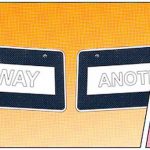As an author, 2010 is my year of collaboration. I’ve been working with former CIA agent Valerie Plame Wilson on a female-driven espionage action thriller. At times the process has included input from our two literary agents, select editors, a film agent, and various sub-rights agents on other continents. Needless to say, I’ve had story mechanics for highly commercial books on my mind.
In my work as a coach and consultant, I read manuscripts on a regular basis. Often, I can identify what’s working–or not–within the first 20 pages. Assuming you are aiming to sell to a publishing house, your story has to hook an agent, editor, reader on page one. Powerful prose is great–as long as you’re using it to tell a story with an engine.
I call that “engine” the story equation, and it represents the cohesion and chemistry of the most important story elements: the story catalyst, the event that hooks the reader; the deep-story problem that will be inseparable from the protagonist’s inner struggles and emotional journey; a fascinating, complex and active protagonist driven to go the distance against the odds.
When these are in place, the story’s emotional logic and meaning will charge the turning points, set-pieces, and the crisis climax. The end result will be a story with heart that moves readers.


